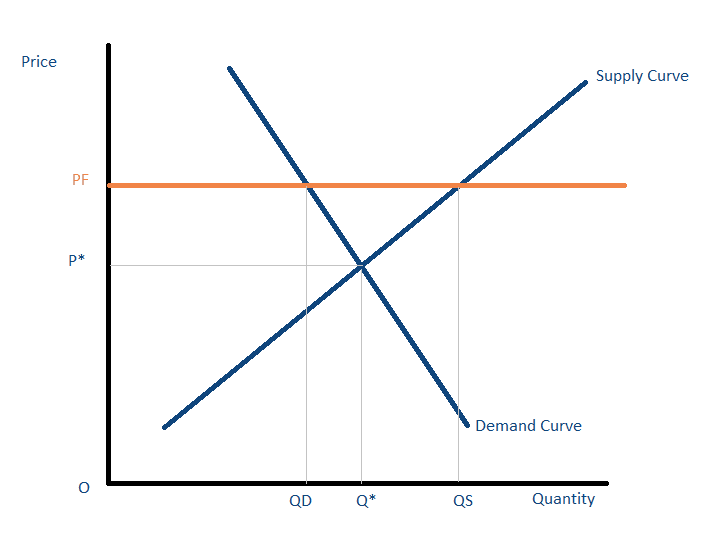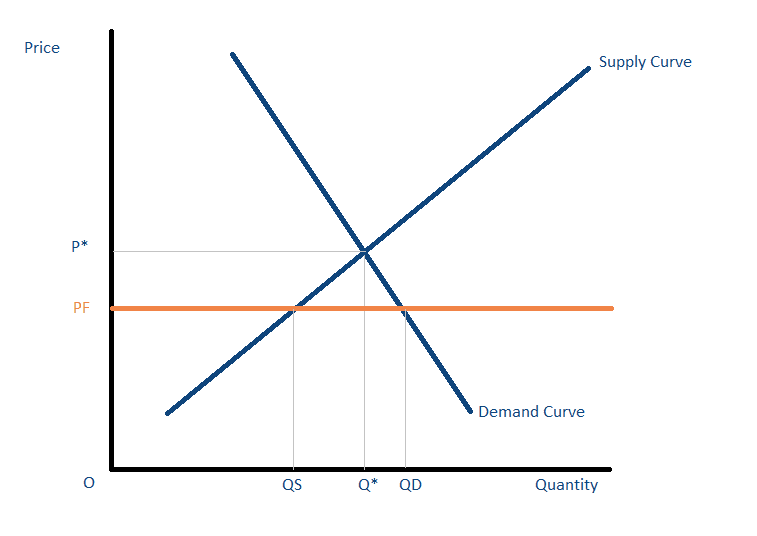Price floor

The term refers to the minimum price set for a commodity in the market. Governments do this to make sure the market price doesn't drop too low, which could harm the financial well-being of commodity producers.
Types of price floors
Binding price floor – when the set price is higher than the market equilibrium. Producers benefit if the higher price compensates for the lower quantity sold. However, consumers are always at a disadvantage with a binding price floor, as they pay more for a reduced quantity.

Non-binding price floor – a non-binding price floor is lower than the market equilibrium price. It has no impact on the market; the price and quantity demanded and supplied stay at equilibrium. Producers and consumers are not influenced by a non-binding price floor.










